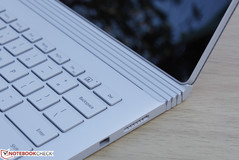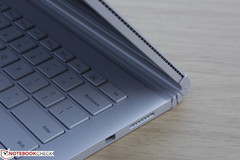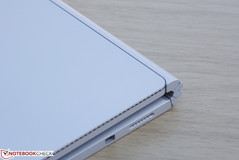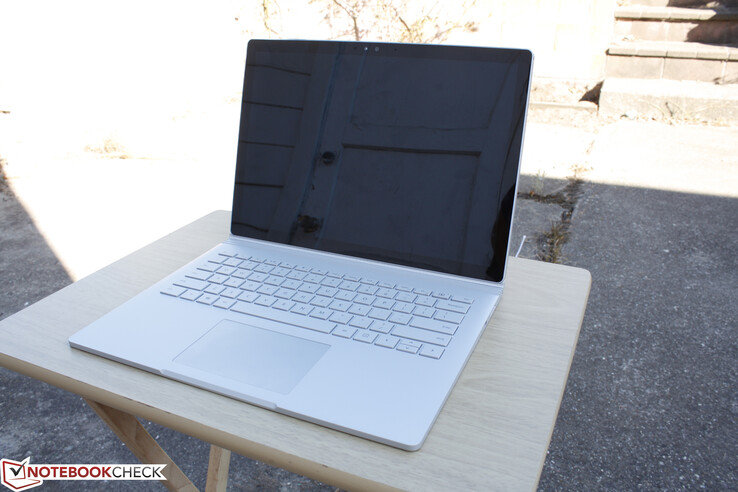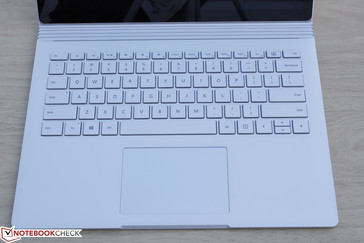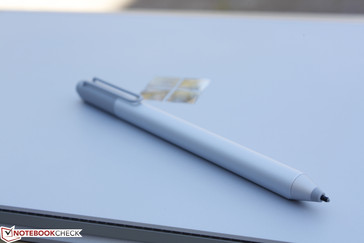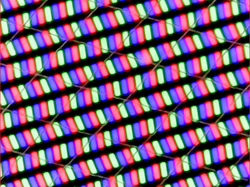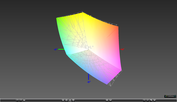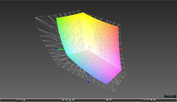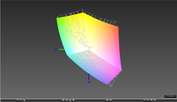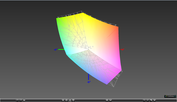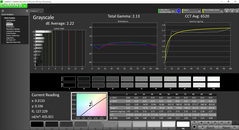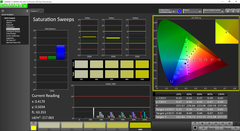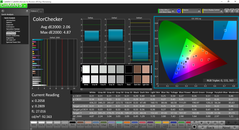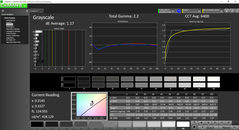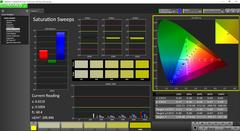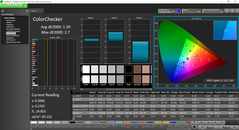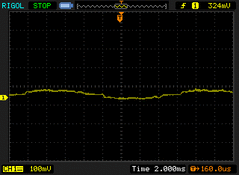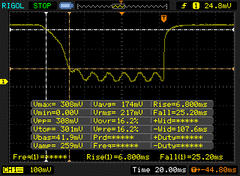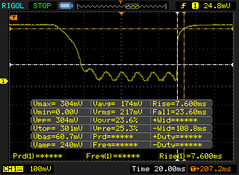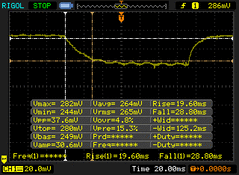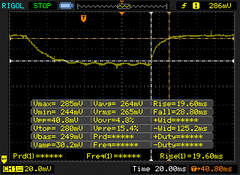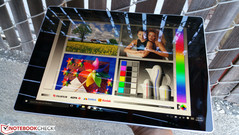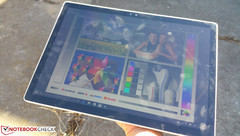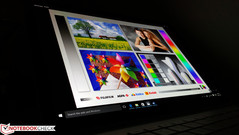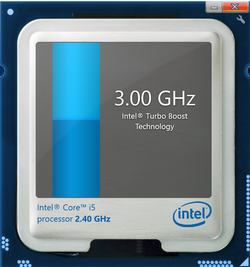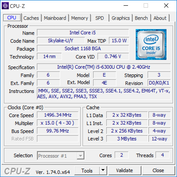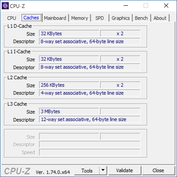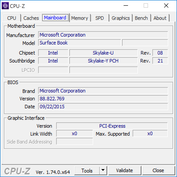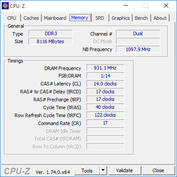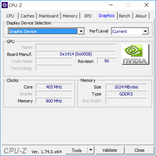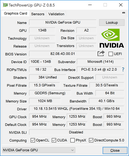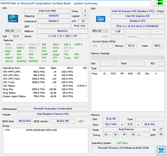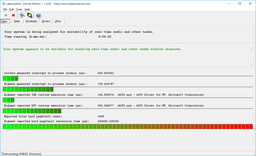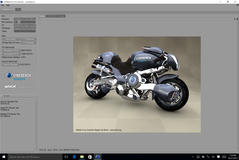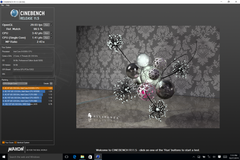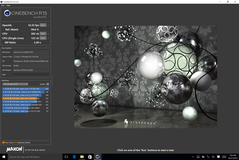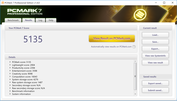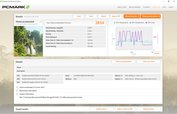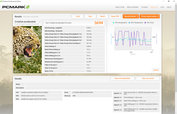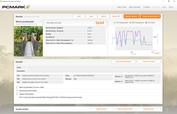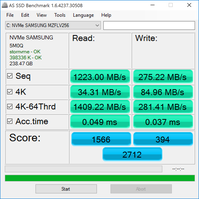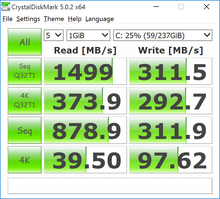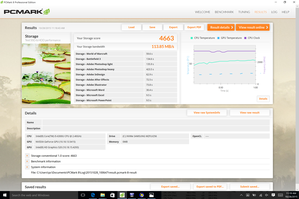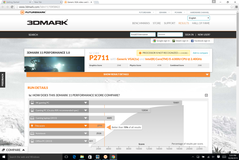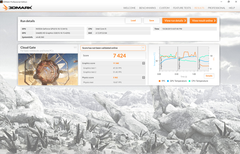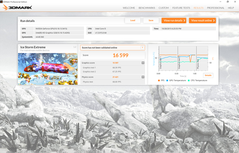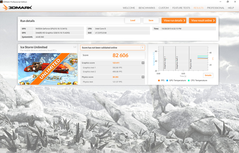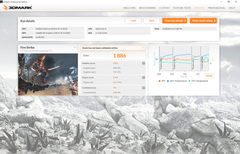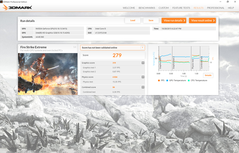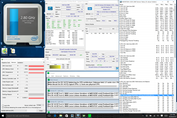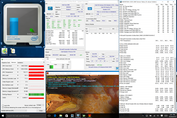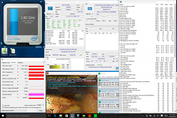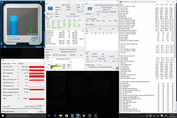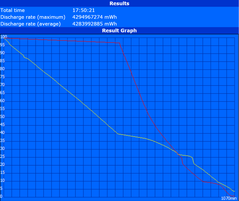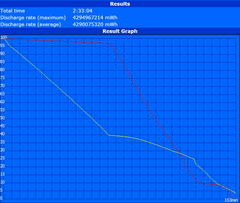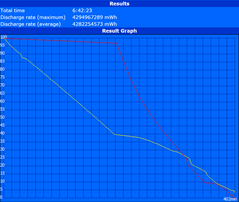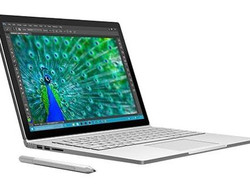Microsoft Surface Book (Core i5, Nvidia GPU) Notebook Review

We've heard of notebooks replacing the common desktop, but what about tablets replacing the common notebook? We're still a long ways off, but Microsoft is intent on creating alternative notebooks with its Surface series and the latest Surface Book is no exception. This is your high-powered Surface Pro that's a step closer to being a full-fledged notebook than a simple tablet with a keyboard dock. Unlike its Surface Pro siblings, the Surface Book comes standard with the dock as the two are interdependent.
SKUs are available with either a Core i5 or i7 Skylake processor with integrated Intel HD 520 graphics. Nvidia graphics is optional and will cost another $400 on top of the base $1500 configuration. Going all out on the notebook will net you a 1 TB SSD, Core i7-6600U CPU, and discrete Nvidia graphics for $3200. Our test model is the $1900 SKU with the custom Nvidia Maxwell GPU.
We'll be taking a full look in this review to see if the Surface Book is really any better than current detachables or even your average Ultrabook.
Case
The design may be minimalist, but its defined edges and rectangular look are unmistakably Surface and contrast very well to Apple's current crop of MacBooks. Its unique property is the taut fulcrum hinge, which is somewhat similar to Lenovo's Watchband hinge for the Yoga 3 Pro and is Microsoft's answer to creating a stronger connection between the detachable base and display. 2-in-1s like the Surface Book are notorious for having weak, top-heavy, or rocking hinges due to the heavy display portion, but we can now say with certainty that the Surface Book offers one of the most stable solutions that we hope to see mimicked from other manufacturers.
It's not perfect, however, as the display can still rock back-and-forth just slightly and the maximum angle is only up to ~130 degrees. The notebook cannot close completely and leaves an overt gap that makes the device look thicker than it actually is. This also makes us less comfortable carrying the device in a backpack or bag without a proper cover as small items can easily fall in between.
Aside from the hinge, the chassis itself is made almost entirely of matte magnesium alloy. The tablet is rigid enough to resist any twisting or depressions on even a minor scale. The keyboard base is slightly more susceptible to twisting and warping towards the center of the keyboard, though not enough to be of any real concern.
As for size and weight, the Surface Book is larger and heavier than many of the Ultrabooks that it intends to replace. The Toshiba Kirabook (1.28 kg), Acer Aspire S7 (1.33 kg), Asus Zenbook UX305 (1.27 kg), and Dell XPS 13 (1.28 kg) are all at least a hundred grams lighter. Part of the reason is because of the Surface Book's 13.5-inch 3:2 form factor, which will naturally be larger than 13-inch and 14-inch 16:9 notebooks. However, the fact that both the display and docking station are each housing core processors also contribute to the overall thickness and weight. Note that while the rear is measured at 23 mm thick, the front edge comes in at just slightly less than 14 mm in comparison.
The tablet portion weighs 730 grams when detached from its base, which is roughly 20 grams heavier than the 12.2-inch Galaxy Note Pro 12.2 and the upcoming 12.9-inch iPad Pro.
Connectivity
Available interfaces include mDP and a couple of full-size USB 3.0 ports. Other than that, users are out of luck when it comes to staples such as RJ-45, VGA, or even a full-size HDMI port. The notebook's small screen size isn't an excuse for the limited number of options either as many similarly-sized Ultrabooks tend to offer more than what the Surface Book carries. A USB Type-C or Thunderbolt port would have gone a long way to future-proofing the already pricey device.
Communication
WLAN is provided by a dual-band (2x2) Marvell Avastar 802.11ac module for theoretical transfer speeds of up to 867 Mbps with integrated Bluetooth 4.0. We experienced no latency or connectivity issues when connected to a standard home network.
Disappointingly, there are no options for WWAN or GPS. The fact that Microsoft offers the Surface Book with a 1 TB SSD for $3200 USD but no SKUs with WWAN support is a bit of a head-scratcher.
Security
The Surface Book's lack of a fingerprint reader is made up for by its inclusion of a front-facing infrared camera. As an unlocking feature, it has similarities to the infrared camera on the upcoming Lumia 950 and 950 XL smartphones. The man drawback is that the user must maintain a reasonable distance from the camera to successfully pass the lock screen. If conditions are met, the entire process should take no more than one to two seconds.
Accessories
It's no surprise that the Microsoft Store sells official mDP adapters for converting to HDMI, RJ-45, or VGA for $39 USD each. There are currently no first-party carrying cases or protective covers for the Surface Book as of this writing. The lack of a dedicated docking port underneath the base further limits its connectivity options.
Maintenance
While there is a maintenance panel underneath the docking station, there are no visible screws anywhere on the device. Microsoft has not designed the Surface Book to be tinkered with or upgraded by the end-user.
Warranty
The standard 1-year limited warranty applies when purchased directly from Microsoft. Accidental damage protection and a 2-year extension is available for $250 USD. Brick and mortar stores will typically offer more levels of protection if desired.
Input Devices
Keyboard
Aesthetically, the keyboard could easily belong on a Chromebook because of its simple appeal and layout. In terms of usability, the keys offer an excellent combination of travel and tactile feedback for a surprisingly comfortable typing experience. Typing feels roomy (17 x 17 mm QWERTY keys, ~2.5 mm spacing) and with almost no clatter. Individual keys are stiff and do not wiggle in place as may happen on less expensive Ultrabooks.
As great as the backlit keyboard may be, it is oddly missing brightness controls. There is no Bluetooth connectivity for the dock as it relies solely on its pins for communicating with the tablet. The Up and Down Arrow keys are halved in size, softer in feedback, and are less comfortable to use.
Finally, the proper way to use the keyboard dock is to power on the tablet while it is connected to the dock. Attaching the tablet to the dock after powering on the tablet will temporarily disable the keyboard, touchpad, and USB ports. This behavior is very strange and we can only assume that this is a bug with the system's automatic detection. The dedicated key to properly detach the tablet may sometimes be unresponsive as well.
Touchpad
With a surface area of 10.6 x 7 cm, the Surface Book touchpad is large considering the screen size. This makes for easier multi-touch gestures and basic scrolling with smooth gliding properties from edge to edge. Business purists may lament the fact the there is no TrackPoint or dedicated mouse keys. More "traditional" business notebooks from the ThinkPad or EliteBook series are faster and more accurate to control if no external mouse is available.
November 3, 2015 update: There have been multiple reports of the touchpad misbehaving during use. We can confirm on our test model that there is indeed a responsiveness issue, specifically around the edges. The entire surface can sometimes become unresponsive if gliding from the outside towards the center, but not if gliding from the center towards the edges. The problem occurs under very specific circumstances and appears to be software-related rather than a hardware issue.
Touchscreen
The 5-point capacitive touchscreen is made easy to use by the relatively lightweight tablet and narrow bezel. We experienced no responsiveness issues whilst using the Surface Book in this manner. We can, however, mention that automatic rotation can only be toggled through software. Competing convertibles like the Lenovo Yoga 3 Pro offer a hard toggle switch on the edge for convenient access, which can be very handy when sharing content with others in tablet mode.
Stylus
The included Surface Pen is identical to the one for the Surface Pro 4. Anyone who has used the stylus for the Surface Pro 3 will be instantly familiar as it provides the same number of functions and 1024 levels of pressure. Its wide diameter already makes it one of the more comfortable styluses to use as it better mimics the size and weight of a typical ballpoint pen.
Display
We haven't seen a screen this out of left field since the Chromebook Pixel and its 12.85-inch 2560 x 1700 3:2 display. The Surface Book has carved itself its own niche with a unique 13.5-inch 3000 x 2000 3:2 display for a pixel density of 267 PPI. Subjectively, it's easy to say that the glossy screen is gorgeous and is one of the highlights of the notebook. There is no graininess to colors that may be present on matte panels and we can only notice slight backlight bleeding when at maximum screen brightness and under dim ambient conditions. The display itself carries a Panasonic MEI96A2 model name that can also be found on other high-end notebooks like the Aorus X5, Sony Vaio Fit Multi-Flip, and the Panasonic Toughpad FZ-G1, albeit at different screen sizes and resolutions.
Measured brightness and contrast levels are better than close competitors including the Apple MacBook Pro Retina 13. At nearly 1700:1 (Microsoft claims a contrast of 1800:1), video playback looks phenomenal on the Surface Book, especially at higher resolutions.
| |||||||||||||||||||||||||
Brightness Distribution: 93 %
Center on Battery: 430.9 cd/m²
Contrast: 1696:1 (Black: 0.254 cd/m²)
ΔE ColorChecker Calman: 2.06 | ∀{0.5-29.43 Ø4.78}
ΔE Greyscale Calman: 2.22 | ∀{0.09-98 Ø5}
96% sRGB (Argyll 1.6.3 3D)
64% AdobeRGB 1998 (Argyll 1.6.3 3D)
68.9% AdobeRGB 1998 (Argyll 3D)
95.8% sRGB (Argyll 3D)
67% Display P3 (Argyll 3D)
Gamma: 2.13
CCT: 6520 K
| Microsoft Surface Book Core i5 13.5-inch (3000 x 2000) | Apple MacBook Pro Retina 13 inch 2015-03 13.3-inch (2560 x 1600) | Toshiba KIRA-10D 13.3-inch (1920 x 1080) | Acer Aspire S7-393-75508G25EWS 13.3-inch (2560 x 1440) | Asus Zenbook UX305LA-FC012H 13.3-inch (1920 x 1080) | Dell XPS 13-9343 Non-Touch 13.3-inch (1920 x 1080) | |
|---|---|---|---|---|---|---|
| Display | -1% | 3% | 4% | -5% | -4% | |
| Display P3 Coverage (%) | 67 | 65.9 -2% | 69.1 3% | 70.1 5% | 63.9 -5% | 65.9 -2% |
| sRGB Coverage (%) | 95.8 | 97 1% | 98.2 3% | 98.3 3% | 91.6 -4% | 89.6 -6% |
| AdobeRGB 1998 Coverage (%) | 68.9 | 67.4 -2% | 71 3% | 71.1 3% | 65 -6% | 66.2 -4% |
| Response Times | ||||||
| Response Time Grey 50% / Grey 80% * (ms) | 48.4 ? | |||||
| Response Time Black / White * (ms) | 32.8 ? | |||||
| PWM Frequency (Hz) | ||||||
| Screen | -11% | -14% | -20% | -42% | -59% | |
| Brightness middle (cd/m²) | 430.9 | 361 -16% | 334 -22% | 360 -16% | 349 -19% | 409.7 -5% |
| Brightness (cd/m²) | 410 | 342 -17% | 316 -23% | 341 -17% | 338 -18% | 405 -1% |
| Brightness Distribution (%) | 93 | 81 -13% | 92 -1% | 90 -3% | 87 -6% | 93 0% |
| Black Level * (cd/m²) | 0.254 | 0.361 -42% | 0.29 -14% | 0.23 9% | 0.25 2% | 0.366 -44% |
| Contrast (:1) | 1696 | 1000 -41% | 1152 -32% | 1565 -8% | 1396 -18% | 1119 -34% |
| Colorchecker dE 2000 * | 2.06 | 1.82 12% | 2.27 -10% | 3.35 -63% | 5.49 -167% | 7.67 -272% |
| Greyscale dE 2000 * | 2.22 | 1.8 19% | 2.47 -11% | 3.62 -63% | 5.43 -145% | 4.66 -110% |
| Gamma | 2.13 103% | 2.49 88% | 2.36 93% | 2.51 88% | 2.17 101% | 1.65 133% |
| CCT | 6520 100% | 6417 101% | 6872 95% | 6805 96% | 7055 92% | 6502 100% |
| Color Space (Percent of AdobeRGB 1998) (%) | 64 | 61.9 -3% | 64 0% | 65 2% | 60 -6% | 59.65 -7% |
| Color Space (Percent of sRGB) (%) | 96 | 96.9 1% | 92 -4% | |||
| Colorchecker dE 2000 max. * | 3.26 | |||||
| Total Average (Program / Settings) | -6% /
-9% | -6% /
-9% | -8% /
-13% | -24% /
-33% | -32% /
-44% |
* ... smaller is better
Color space coverage is a measured 64 percent and 96 percent of the AdobeRGB and sRGB standards, respectively. While not important for emails and word processing, the near 100 percent sRGB gamut is vital for digital graphic artists. This is comparable to other notebooks with high-end displays including the Toshiba Kira series. Standard IPS panels typically cover only 60 to 70 percent of sRGB in comparison.
Further analyses with an X-Rite spectrophotometer reveal very accurate colors and grayscale with no end-user calibration required. The MacBook Pro Retina 13 does come in just slightly more accurate in terms of DeltaE2000 deviations. Colors are shown to be a bit less accurate at higher saturation levels, which suggests less-than-perfect sRGB coverage despite Microsoft's claims of 100 percent sRGB.
Photosensor measurements reveal no use of pulse-width modulation. Black-white response times are the typical 7 - 8 ms while grey-grey rise and falls times are slower at about 20 ms and 29 ms, respectively.
Outdoor usability is very good when under shade or an overcast day. Maximum brightness will not artificially drop if disconnected from mains or the keyboard dock. The glossy Gorilla Glass 4 cover works against the screen with heavy glare present. It's possible to comfortably view content under direct sunlight assuming that the glare can be avoided.
Viewing angles are excellent due to the underlying IPS panel. Colors and contrast do not significantly degrade even if viewing from extreme angles or orientations. Relative brightness remains very stable regardless of the angle.
Performance
Microsoft offers the Surface Book with just two different Skylake processors (Core i5-6300U and Core i7-6600U) and an optional unspecified Nvidia Maxwell GPU. The GPU itself is inside of the docking base and separate from the tablet portion. When the two are disconnected (or if the SKU is lacking the Nvidia graphics), then the Surface Book will use the integrated HD Graphics 520 GPU. There is no Optimus in the traditional sense as the notebook will automatically switch between the two when the dock is connected or disconnected. In this case, the screen will flicker to indicate a successful GPU switch.
Our test model houses an i5-6300U with dedicated Nvidia graphics. The CPU and GPU will run at just 400 MHz and 135/202.5 MHz (core/memory), respectively, when the system is idling in Power Saver. Otherwise, the CPU and GPU are wholly capable of running up to 3 GHz and 993/1252.8 MHz with Boost, respectively.
System RAM can be configured with either 8 GB or 16 GB LPDDR3 in Dual-Channel mode only. LatencyMon shows latency spikes only when WLAN is active.
Processor
As one of the first new notebooks to be equipped with the 2.4 GHz Core i5-6300U, raw performance in synthetic CPU benchmarks leaves a very positive impression. The Surface Book maintains healthy leads over common ULV processors of yesteryear including the i5-5300U Broadwell and i5-4200U Haswell by up to 14 percent and 27 percent, respectively, in multi-core CineBench tests. Single-core gains over Broadwell are smaller due to smaller differences in Turbo Boost speeds. This is still a dual-core CPU, however, so quad-core processors like the powerful i7-4720HQ will significantly outpace the i5-6300U in multi-threaded operations.
More technical information and comparisons on the Core i5-6300U can be found on our dedicated CPU page here.
| Cinebench R11.5 | |
| CPU Single 64Bit (sort by value) | |
| Microsoft Surface Book Core i5 | |
| HP EliteBook Folio 1040 G2 H7W22EA | |
| Dell Latitude 14 7414 Rugged Extreme | |
| Lenovo IdeaPad Z40-59422614 | |
| Toshiba Tecra A50-C1510W10 | |
| Asus Transformer Book T300FA-FE001H | |
| Eurocom Shark 4 | |
| CPU Multi 64Bit (sort by value) | |
| Microsoft Surface Book Core i5 | |
| HP EliteBook Folio 1040 G2 H7W22EA | |
| Dell Latitude 14 7414 Rugged Extreme | |
| Lenovo IdeaPad Z40-59422614 | |
| Toshiba Tecra A50-C1510W10 | |
| Asus Transformer Book T300FA-FE001H | |
| Eurocom Shark 4 | |
| Cinebench R15 | |
| CPU Single 64Bit (sort by value) | |
| Microsoft Surface Book Core i5 | |
| HP EliteBook Folio 1040 G2 H7W22EA | |
| Dell Latitude 14 7414 Rugged Extreme | |
| Lenovo IdeaPad Z40-59422614 | |
| Toshiba Tecra A50-C1510W10 | |
| Asus Transformer Book T300FA-FE001H | |
| Eurocom Shark 4 | |
| CPU Multi 64Bit (sort by value) | |
| Microsoft Surface Book Core i5 | |
| HP EliteBook Folio 1040 G2 H7W22EA | |
| Dell Latitude 14 7414 Rugged Extreme | |
| Lenovo IdeaPad Z40-59422614 | |
| Toshiba Tecra A50-C1510W10 | |
| Asus Transformer Book T300FA-FE001H | |
| Eurocom Shark 4 | |
| Super Pi Mod 1.5 XS 32M - 32M (sort by value) | |
| Microsoft Surface Book Core i5 | |
| HP EliteBook Folio 1040 G2 H7W22EA | |
| Dell Latitude 14 7414 Rugged Extreme | |
| Lenovo IdeaPad Z40-59422614 | |
| Toshiba Tecra A50-C1510W10 | |
| Asus Transformer Book T300FA-FE001H | |
| Eurocom Shark 4 | |
* ... smaller is better
System Performance
PCMark 7 ranks the Surface Book very highly for a detachable. Its final score of 5135 points is essentially on par with the older gaming Schenker XMG P722 and its GTX 680M SLI and the Asus ZenBook UX302. PCMark benchmarks tend to heavily favor SSD-based systems and the new NVMe SSDs already rival systems equipped with SATA III SSDs in RAID 0.
Subjectively, system performance is almost instantaneous when navigating or launching applications. Detaching the tablet portion can feel a bit clunky, however, as it is completely software-driven. The tablet can only be removed once the onscreen popup message says it is ok, but the message will unnecessarily linger for quite some time even after detaching from its base.
| PCMark 7 Score | 5135 points | |
| PCMark 8 Home Score Accelerated v2 | 2814 points | |
| PCMark 8 Creative Score Accelerated v2 | 3694 points | |
| PCMark 8 Work Score Accelerated v2 | 3644 points | |
Help | ||
Storage Devices
It's a pleasant surprise to see the Surface Book come standard with an NVMe SSD considering that the notebook has glossed over the inclusion of DDR4. So far, NVMe is still largely found on high-end gaming notebooks and has yet to trickle down to more affordable devices.
Our test model is equipped with a 256 GB Samsung MZFLV256 M.2 card. Sequential read speed is well beyond SATA III SSDs at 1223 MB/s according to AS SSD. Two Lite-On LMT-128M6M SATA III SSDs in RAID 0, for example, shows a read speed of 945 MB/s in the same benchmark. Sequential write speed of our Samsung SSD, however, is comparatively low at just 275 MB/s compared to 591 MB/s for the RAID 0 Lite-On drives. This is in the same ballpark as many single SATA III SSDs if not lower.
See our growing benchmarks list of HDDs and SSDs here.
GPU Performance
Microsoft is advertising its optional Nvidia Maxwell GPU with no hard specifications or numbers as it is likely a customized chip designed specifically for the Surface Book. Thankfully, a quick look with GPU-Z reveals specifications unlike those of the GeForce 940M including a total of 384 Unified Shaders and a 64-bit bus width. Pixel fillrate (15.7 GPixel/s 940M vs. 15.3 GPixel/s Surface Book), Texture fillrate (31.4 GTexel/s vs. 30.5 GTexel/s), memory clock (1001 MHz vs. 1252 MHz), and GPU clock (980 MHz vs. 954 MHz) are also nearly identical between the two GPUs. The biggest difference is that the Microsoft solution uses 1 GB GDDR5 VRAM instead of DDR3, which should theoretically give it the edge in modern games.
Indeed, 3DMark benchmarks show exactly as predicted as Cloud Gate and Fire Strike scores are about 20 percent ahead of the Nvidia 940M and Intel Iris Pro Graphics 5200. It's still quite far away from the 950M, however, and is unfortunately closer to the 940M than it is to the 950M in terms of raw performance. Nonetheless, it is a huge upgrade from the integrated HD 4000 or HD 5500 commonly found on affordable Ultrabooks.
| 3DMark 06 Standard Score | 15111 points | |
| 3DMark 11 Performance | 2711 points | |
| 3DMark Ice Storm Standard Score | 49514 points | |
| 3DMark Cloud Gate Standard Score | 7424 points | |
| 3DMark Fire Strike Score | 1886 points | |
| 3DMark Fire Strike Extreme Score | 279 points | |
Help | ||
| 3DMark | |
| 1920x1080 Fire Strike Graphics (sort by value) | |
| Microsoft Surface Book Core i5 | |
| Asus UX501JW-DS71T | |
| Asus GL771JM | |
| MSI GP62-2QEi781FD | |
| MSI GS30 Shadow | |
| Lenovo Yoga 3 14-80JH0035GE | |
| Vizio CT14-A0 | |
| 1280x720 Cloud Gate Standard Graphics (sort by value) | |
| Microsoft Surface Book Core i5 | |
| Asus UX501JW-DS71T | |
| Asus GL771JM | |
| MSI GP62-2QEi781FD | |
| MSI GS30 Shadow | |
| Lenovo Yoga 3 14-80JH0035GE | |
| Vizio CT14-A0 | |
Gaming Performance
Similar to its 3DMark results, the Microsoft-Nvidia GPU lies comfortably between the Nvidia 950M and 940M regarding real-world gaming performance. Games are very playable at 1080p and on Low to Medium quality settings. The native resolution is still out-of-reach for most titles unless if you enjoy DOTA 2 or LoL on the lowest settings. The aspect ratio of the Surface Book discourages serious gaming and video playback in favor of word processing and office work.
| low | med. | high | ultra | |
|---|---|---|---|---|
| Sleeping Dogs (2012) | 112.4 | 85.6 | 42.8 | 10.9 |
| Tomb Raider (2013) | 161.5 | 82.8 | 55.2 | 25.8 |
| StarCraft II: Heart of the Swarm (2013) | 258 | 141.2 | 74.2 | 37.5 |
| BioShock Infinite (2013) | 94.2 | 64.8 | 56.5 | 20.8 |
| Metro: Last Light (2013) | 59.6 | 44.7 | 30.7 | 15.7 |
| Thief (2014) | 45.6 | 28.2 | 22.3 | 9.4 |
| F1 2014 (2014) | 117 | 94 | 76 | 49 |
| Batman: Arkham Knight (2015) | 23 | 14 | ||
| Metal Gear Solid V (2015) | 42 | 35.9 | 19.7 | 13.3 |
| Metro: Last Light | |
| 1366x768 High (DX11) AF:16x (sort by value) | |
| Microsoft Surface Book Core i5 | |
| MSI GP62-2QEi781FD | |
| Eurocom Shark 4 | |
| Lenovo ThinkPad T450s-20BWS1UT00 | |
| 1920x1080 Very High (DX11) AF:16x (sort by value) | |
| Microsoft Surface Book Core i5 | |
| MSI GP62-2QEi781FD | |
| Eurocom Shark 4 | |
| Lenovo ThinkPad T450s-20BWS1UT00 | |
| Tomb Raider | |
| 1366x768 High Preset AA:FX AF:8x (sort by value) | |
| Microsoft Surface Book Core i5 | |
| MSI GP62-2QEi781FD | |
| Eurocom Shark 4 | |
| Lenovo ThinkPad T450s-20BWS1UT00 | |
| 1920x1080 Ultra Preset AA:FX AF:16x (sort by value) | |
| Microsoft Surface Book Core i5 | |
| MSI GP62-2QEi781FD | |
| Eurocom Shark 4 | |
| Lenovo ThinkPad T450s-20BWS1UT00 | |
| Thief | |
| 1366x768 High Preset AA:FXAA & Low SS AF:4x (sort by value) | |
| Microsoft Surface Book Core i5 | |
| MSI GP62-2QEi781FD | |
| Eurocom Shark 4 | |
| 1920x1080 Very High Preset AA:FXAA & High SS AF:8x (sort by value) | |
| Microsoft Surface Book Core i5 | |
| MSI GP62-2QEi781FD | |
| Eurocom Shark 4 | |
| Sleeping Dogs | |
| 1366x768 High Preset AA:High (sort by value) | |
| Microsoft Surface Book Core i5 | |
| MSI GP62-2QEi781FD | |
| Eurocom Shark 4 | |
| 1920x1080 Extreme Preset AA:Extreme (sort by value) | |
| Microsoft Surface Book Core i5 | |
| MSI GP62-2QEi781FD | |
| Eurocom Shark 4 | |
| StarCraft II: Heart of the Swarm | |
| 1366x768 High AA:on (sort by value) | |
| Microsoft Surface Book Core i5 | |
| MSI GP62-2QEi781FD | |
| 1920x1080 Ultra / Extreme AA:on (sort by value) | |
| Microsoft Surface Book Core i5 | |
| MSI GP62-2QEi781FD | |
| BioShock Infinite | |
| 1366x768 High Preset (sort by value) | |
| Microsoft Surface Book Core i5 | |
| MSI GP62-2QEi781FD | |
| Eurocom Shark 4 | |
| 1920x1080 Ultra Preset, DX11 (DDOF) (sort by value) | |
| Microsoft Surface Book Core i5 | |
| MSI GP62-2QEi781FD | |
| Eurocom Shark 4 | |
| F1 2014 | |
| 1920x1080 High Preset (sort by value) | |
| Microsoft Surface Book Core i5 | |
| MSI GP62-2QEi781FD | |
| Eurocom Shark 4 | |
| Lenovo ThinkPad T450s-20BWS1UT00 | |
| 1920x1080 Ultra Preset AA:4x MS (sort by value) | |
| Microsoft Surface Book Core i5 | |
| MSI GP62-2QEi781FD | |
| Eurocom Shark 4 | |
| Lenovo ThinkPad T450s-20BWS1UT00 | |
| Metal Gear Solid V | |
| 1920x1080 High / On (sort by value) | |
| Microsoft Surface Book Core i5 | |
| Eurocom Shark 4 | |
| 1920x1080 Extra High / On (sort by value) | |
| Microsoft Surface Book Core i5 | |
| Eurocom Shark 4 | |
Stress Test
The Microsoft notebook holds up extremely well to stress tests. The CPU itself is able to maintain a consistent Turbo Boost of 2.8 - 2.9 GHz compared to its base 2.4 GHz clock rate when running Prime95. The Nvidia GPU throttles just slightly under Furmark from its base 954 MHz to a steady 823 - 888 MHz range. Running both Prime95 and FurMark simultaneously will throttle the GPU further while the CPU is unaffected. The catch is that CPU temperature can reach 90 C under these conditions compared to ~75 C for the dGPU.
Unigine Heaven stress is more representative of real-world loads. Constant CPU Turbo Boost is not necessary under such loads, so the CPU will range from as low as 500 MHz up to 2.9 GHz as needed. Core temperature is consequently much lower near the 60 C range. The GPU is able to run consistently with Boost at 993 MHz.
Running on battery power will not reduce GPU performance, which is quite uncommon for a detachable. CPU Turbo Boost, however, will occur less frequently. A 3DMark 11 run on batteries resulted in Physics and GPU scores of 3541 and 2529 points, respectively, compared to 4199 and 2548 points when connected to mains.
| CPU Clock (GHz) | GPU Clock (MHz) | Maximum CPU Temperature (C) | Maximum GPU Temperature (C) | |
Prime95 Stress |
2.8 - 2.9 | -- | ~80 | -- |
FurMark Stress |
-- | 823 - 888 | -- | ~76 |
Prime95 + FurMark Stress |
2.8 - 2.9 | 745 - 823 | ~89 | ~76 |
Unigine Heaven Stress |
0.5 - 2.9 | 993 | ~61 | ~70 |
Unigine Heaven Stress (Battery Power) |
0.5 - 2.9 | 993 | ~50 | ~70 |
Emissions
System Noise
The notebook utilizes one fan for the GPU in the docking station and another inside of the tablet itself. Fortunately, both are virtually always idle when browsing or word processing. Only during higher loads, such as when gaming, will the fans become noticeably audible. The data below reflect the Surface Book with the docking base attached.
Maximum stress (Prime95 and FurMark) will induce fan noise of just over 40 dB(A). Running Unigine Heaven will have fan noise slightly lower at a steady 37 dB(A). In either case, the results are really no different than a typical Ultrabook where the 37 to 40 dB(A) range is very common under similar conditions. Performing the same test on just the Surface Book tablet will have fan noise max out at about 34 to 35 dB(A), so the GPU fan is the much louder one of the two.
Noise level
| Idle |
| 29.5 / 29.6 / 29.7 dB(A) |
| Load |
| 37.5 / 40.9 dB(A) |
 | ||
30 dB silent 40 dB(A) audible 50 dB(A) loud |
||
min: | ||
Temperature
Unlike typical notebooks where we only measure surface temperature development on the base of the device, the Surface Book calls for measurements on both the display and base portions since its CPU and GPU are separated accordingly.
When idling, the base remains noticeably cooler than the tablet portion, which can be as warm as 33 C near the bottom quadrant of the screen. Maximum loads will accentuate this hot spot to over 46 C on both sides of the tablet. Microsoft has concentrated this hot spot nearest the center of the device, so the tablet can still be held comfortably in its default landscape mode without burning any fingers. Nonetheless, the left side of the device will still grow noticeably warmer than the right. When compared to other detachables like the Portege Z20t or Transformer Book T300 Chi, the Surface Book runs warmer despite its use of two active fans.
As for the base, the front areas remain relatively cool when under high processing loads while the keyboard will warm up considerably near the center keys. The warmest areas lie on the surface immediately above the top row of Function keys, which is conveniently away from the palm rests and touchpad. While our load temperature measurements are not representative of real-world browsing use, the Surface Book is still one of the warmest detachables we've seen.
(±) The maximum temperature on the upper side is 44.2 °C / 112 F, compared to the average of 35.4 °C / 96 F, ranging from 19.6 to 60 °C for the class Convertible.
(±) The bottom heats up to a maximum of 41.2 °C / 106 F, compared to the average of 36.8 °C / 98 F
(+) In idle usage, the average temperature for the upper side is 24.4 °C / 76 F, compared to the device average of 30.3 °C / 87 F.
(+) The palmrests and touchpad are cooler than skin temperature with a maximum of 27.8 °C / 82 F and are therefore cool to the touch.
(±) The average temperature of the palmrest area of similar devices was 27.9 °C / 82.2 F (+0.1 °C / 0.2 F).
Speakers
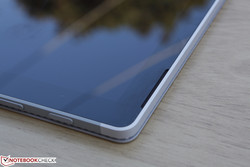
The stereo speaker grilles are two narrow slits on the bezel of the tablet and they blend in very well with the design as to appear almost invisible. Bass is lacking, so sound quality is as expected from your typical tablet. Perhaps more importantly, maximum volume is loud with no crackling or static on higher settings.
Earphones are still recommended for media playback since the range of the internal speakers is quite low. Unfortunately, the audio jack is located on the top corner of the tablet meaning that the cable can easily become a nuisance when in notebook mode.
Battery Life
The primary module in the tablet carries a capacity of 18 Wh while the secondary battery in the docking station holds 51 Wh for a combined total of 69 Wh. This is higher than most other 13-inch or 14-inch notebooks where 40 to 60 Wh batteries are the norm with the exception of the 75 Wh battery in the MacBook Pro Retina 13. The modules are not removable in either case. Our data below reflect runtimes in minutes with the docking station attached.
Runtimes on the Surface Book are good, though not fantastic by any means. Our looping WLAN test runs for just under 7 hours until automatic shutdown. Certain competing models can last for at least hour or two longer than the Microsoft notebook under the same testing conditions despite carrying lower capacity batteries. This may be attributed to the Surface Book's lack of Optimus as there is currently no official way to disable the dedicated GPU when the keyboard dock is connected.
It's worth noting that when attached to the docking station, the secondary battery is drained first until it reaches 40 percent capacity. If below this point, the tablet will draw power from both the primary and secondary batteries simultaneously until automatic shutdown. This behavior contrasts how HP utilizes its dual batteries in its own Split x2 detachable where the secondary must be completely drained before drawing power from the primary. Charging the Surface Book takes roughly 2.5 to 3 hours total for both the dock and tablet. Unfortunately, the dock cannot be used to charge the tablet and vice versa if no outlet is available.
Surface Book SKUs with no dGPU will ship with a 36 W power adapter while SKUs with the Nvidia dGPU will have a 65 W power adapter. Both adapters include one built-in USB port for charging other devices.
| Microsoft Surface Book Core i5 69 Wh | Apple MacBook Pro Retina 13 inch 2015-03 75 Wh | Toshiba KIRA-10D 52 Wh | Acer Aspire S7-393-75508G25EWS 47 Wh | Asus Zenbook UX305LA-FC012H 56 Wh | Dell XPS 13-9343 Non-Touch 54 Wh | Lenovo Yoga 3 14-80JH0035GE 47 Wh | |
|---|---|---|---|---|---|---|---|
| Battery runtime | 18% | 16% | -12% | 16% | 21% | -12% | |
| Reader / Idle (h) | 17.8 | 28.2 58% | 23.3 31% | 14 -21% | 24.5 38% | 21.6 21% | 14.8 -17% |
| WiFi v1.3 (h) | 6.7 | 9 34% | 8.6 28% | 7.7 15% | 9.5 42% | 10 49% | 6.4 -4% |
| Load (h) | 2.6 | 1.6 -38% | 2.3 -12% | 1.8 -31% | 1.8 -31% | 2.4 -8% | 2.2 -15% |
Pros
Cons
Verdict
One of the main goals of a detachable notebook is to replace both the user's tablet and notebook with a 2-in-1 solution. The outcome is usually less than perfect with spotty quality, poor keyboard, a heavy display, less features, and slower performance as the core hardware must fit into a tablet form factor.
The Surface Book is easily one of the best detachables currently on the market. It addresses most of these concerns directly with excellent build quality from top to bottom, a backlit keyboard that feels better than on many Ultrabooks, a relatively lightweight display with a narrow bezel, and notebook-like performance from its unique attachable Nvidia GPU. Aside from a few bugs when attaching and detaching the tablet, everything about the Surface Book works incredibly well with little to complain. The fulcrum hinge has its disadvantages mainly from an aesthetic point-of-view as the notebook can never fully close in the traditional sense, but it is functionally superior to switch-lock hinges and magnets commonly found on other detachables like the Transformer Book Chi or Toshiba Portege Z20t. For a $1500 device, this is quality hardware with no cut corners.
What we don't like about the Surface Book is what's not included. Its bare design gives a sense of missing features such as no HDMI-out and no WWAN, the latter of which is surprising considering its portable and versatile design motif. Unlike the Surface Pro series where the tablet can hold its own, the Surface Book tablet is stripped of any and all ports except for a sole 3.5 mm audio jack. There is also a lack of secondary storage, which is something we hope Microsoft will address in future iterations by including an optional HDD or SSD into the keyboard dock itself. The Surface Book is very clearly a notebook first and a tablet second - opposite to the Surface Pro 3 or Surface Pro 4.
Do we recommend the Surface Book over a traditional notebook? Anyone who is already set on a detachable-type notebook should consider the Microsoft solution as it is a serious contender for replacing an aging Ultrabook. However, users who have little interest in the dGPU or mostly use their computers for browsing, word processing, and multimedia playback will find lighter, thinner, and less expensive solutions in the form of newer Ultrabooks with potentially more features.
For core business users, the ThinkPad, EliteBook, and Latitude are all stronger options with vital features that the Surface Book is sorely missing. For everyone else, this is as close to an Apple MacBook alternative from Microsoft that Windows enthusiasts will get.
Microsoft Surface Book Core i5
- 04/27/2016 v5.1 (old)
Allen Ngo




